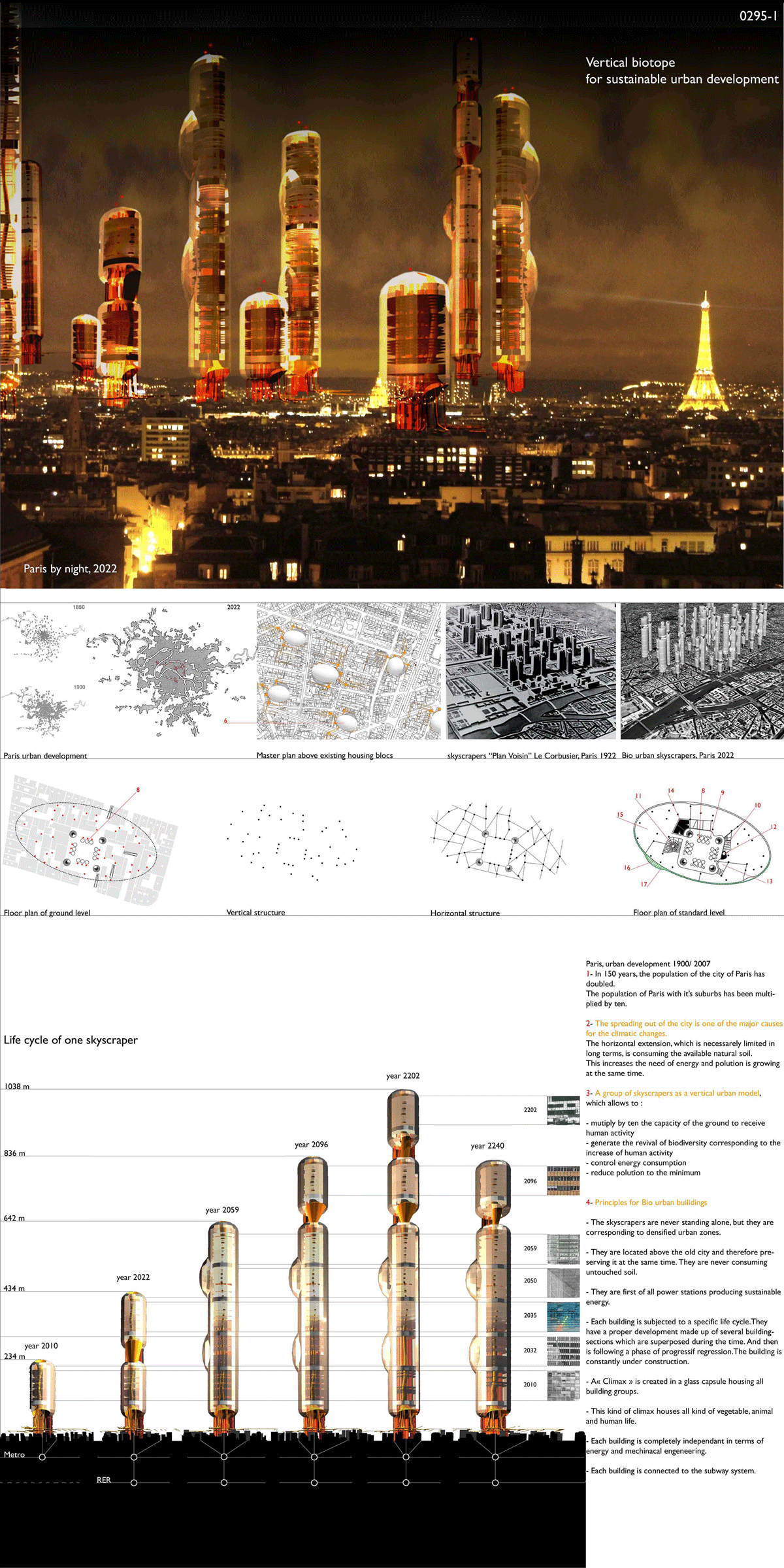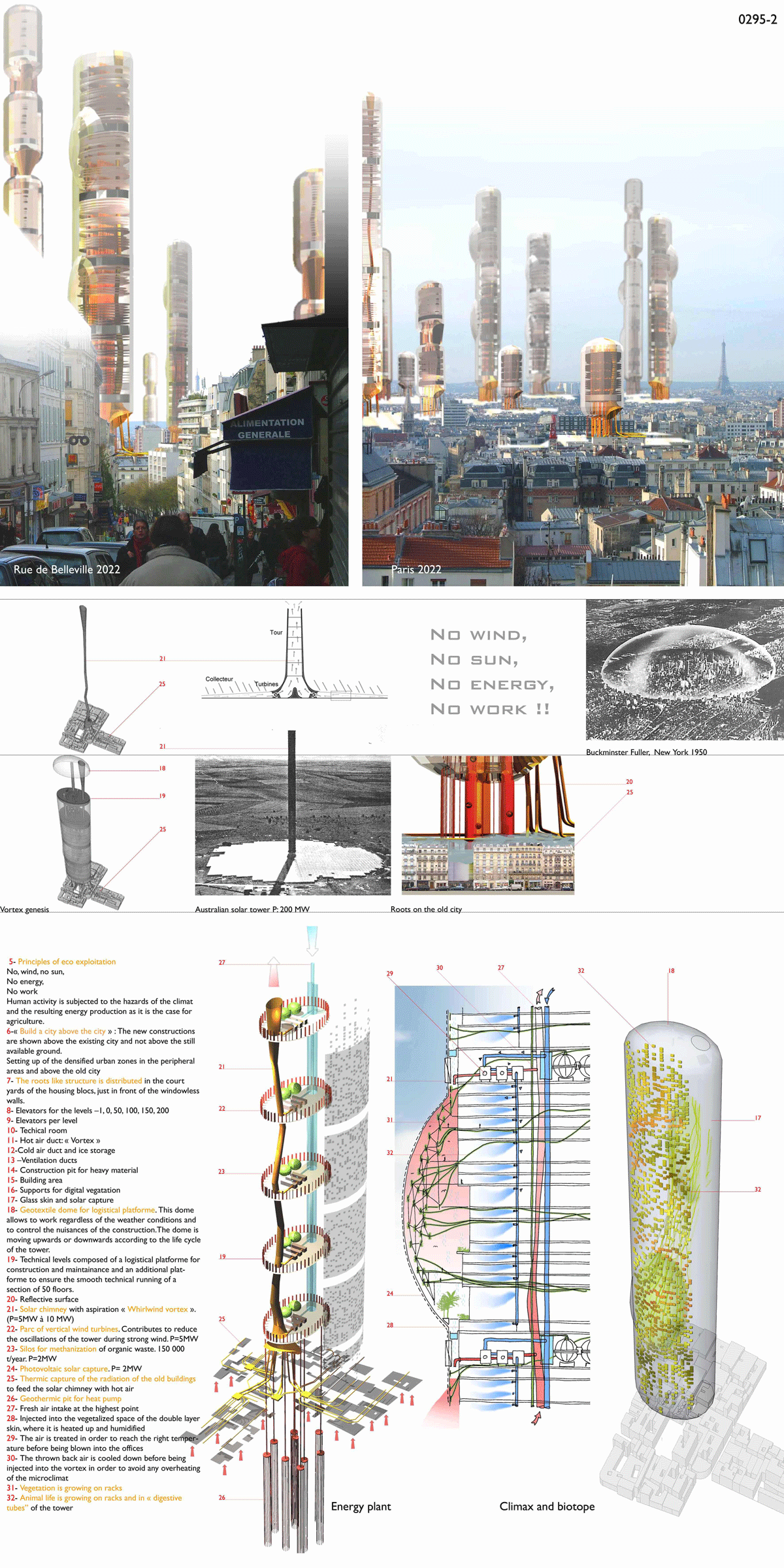Special Mention
2007 Skyscraper Competition
Xavier Lagurgue, Günther Domenig
France

While the first skyscraper projects emerge on the circular Parisian highway, with the aim to densify the agglomeration and preserve the historical center, we propose to set up a network of towers which we call biotopes. The smallest ones are higher than the Eiffel Tower. It’s a “building provocation”, or as the artist Tatiana Trouvé would say, “a paradoxical injunction in which different types of urban organization, although incompatible at the first sight, are superposed”.
When towers are built above the old city, the town as a whole changes and becomes a new one as the result of the dialogue between the contemporary vertical towers and the old horizontal city. The old town does not exist any more in the same way, although it is still there. The background of this paradox is to question our position as users of urban space. It allows us to place ourselves in a sustainable urban development perspective and set priorities: construction, society, economy, environment, history, aesthetics.
We propose to change the status of historical city centers by renewing their accommodation capacity and their evolution potential, rather than accelerate the « museification » of them. This always generates the decline of the suburbs, which are considered to be ideal for experimenting new urban forms. By doing so, the old town is serving as an enormous network of roots for the above located mega-systems, which are covering it and radically transforming its perception. It is only from that starting point that one can imagine building similar constructions in the suburbs.
Rather than being in favor of the uncontrolled expansion of cities – one of the major reasons for the increase in pollution and energy consumption – we propose to make the old city center denser, by superposing several layers which will multiply the actual capacity by ten. We postulate that the old town with its historical diversity, but also with its transportation networks, its energy consumption, and its exclusive relationship with all forms of life, is an obsolete model for the future evolution and is contributing to today’s environmental situation.
Finally, instead of raising the center of Paris as Le Corbusier intended in 1925 with his “Plan voisin”, we propose to superpose the existing with new layers of buildings, which are conceived for a long term life cycle, taking into consideration the future urban development of several centuries, but keeping the preservation of history as a fundamental principle.
We are all sensitive to what the architects Decostered and Rham call the “temptation of the heritage” but, with the perspective of global warming we believe that the idea of “freezing” the cultural heritage of old cities in order to continue expansion is not justified and is based on a short term vision. Therefore, on a theoretical level, the physical limits of the “vertical biotope” are articulated around three complementary principles which are known since 1950 and proposed by Buckminster Fuller in his giant dome covering the city: the capacity to increase the building surface, the autonomous energy system, the independency concerning the climactic and biological aspects.


This work is licensed under a Creative Commons License permitting non-commercial sharing with attribution. https://creativecommons.org/licenses/by-nc-nd/4.0/



